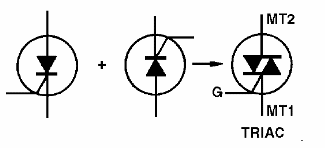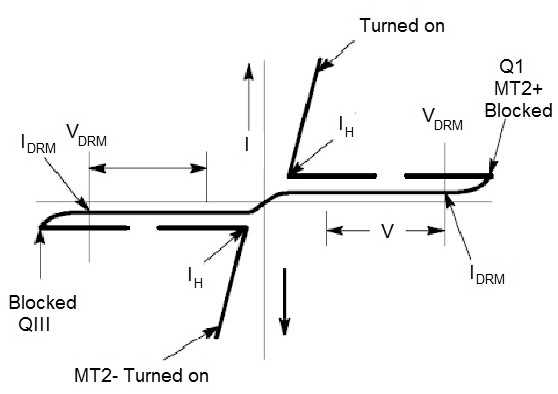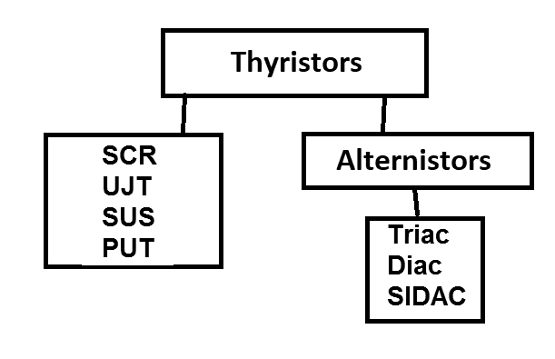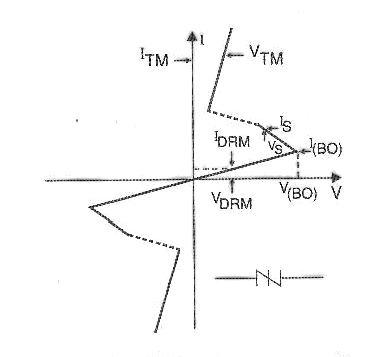The alternistors are nothing more than thyristors, that is, 4-layer diodes, designed for operation on alternate current circuits.
This name is especially adopted for the triacs, which is the most familiar element of the family, by companies like Teccor, Littelfuse and others.
The triac, as we have seen in many articles with applications and our course in power electronics, it is a four-layer diode or thyristor which can control current in both directions and therefore suitable for applications in control circuits in AC networks.
In Figure 1, we have its symbol in which we associate it with two SCRs connected in inverted way.

The characteristic curve of this component is shown in Figure 2.

Companies like Teccor have extensive lines of "alternistor triacs" with currents ranging from 6 to 40 A and voltages from 200 V to 1000 V, which are specifically designed for inductive load switching applications.
In these triacs, two inverted SCRs are integrated in the same chip, but electrically separated in order to improve the characteristics of dv/dt. (See more at: http://web.mit.edu/6.131/www/document/triac_alternistors. pdf)
However, if we consider the definition of "alternistor" as a thyristor for applications in AC circuits, we must go beyond the triacs.
In fact, thyristor is a four-layer diode (see our Electronic-Power Electronic Course), and in this family we can include others which are used to alternating current applications, as shown in Figure 3, thus generating a subfamily.

In addition to the triacs, we also have another type of thyristor family (four-layer diodes) specifically indicated for AC applications, most often at the triac shot which is known as diac (diode for Alternating Current) which we study in our course and we have specific articles.
The symbols themselves, shown in Figure 4, reminds us the triac.

And, another family component which also consists of a four-layer diode (thyristor) for AC circuit applications that we highlight is SIDAC.
Silicon (SI) diodes (D) for Alternating Current (AC) are special diodes of the thyristor family indicated for applications in AC circuits. They behave like a neon bulb firing when a voltage (in any direction) is applied to them. When triggering, intense currents can be driven. Sidacs can be used as trigger elements and relaxation oscillators in high voltage circuits connected to the power grid. In Figure 5, we have the characteristic curve of a SIDAC.




